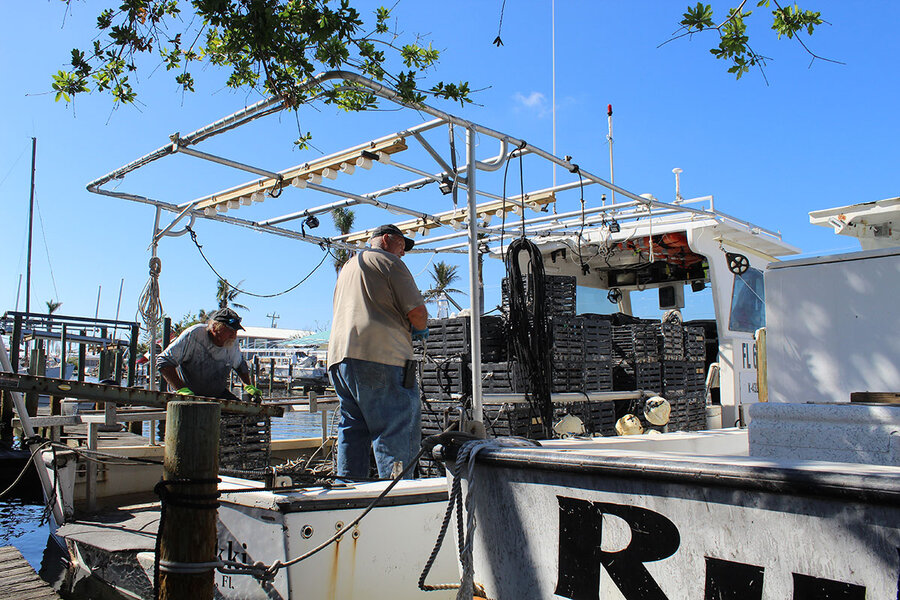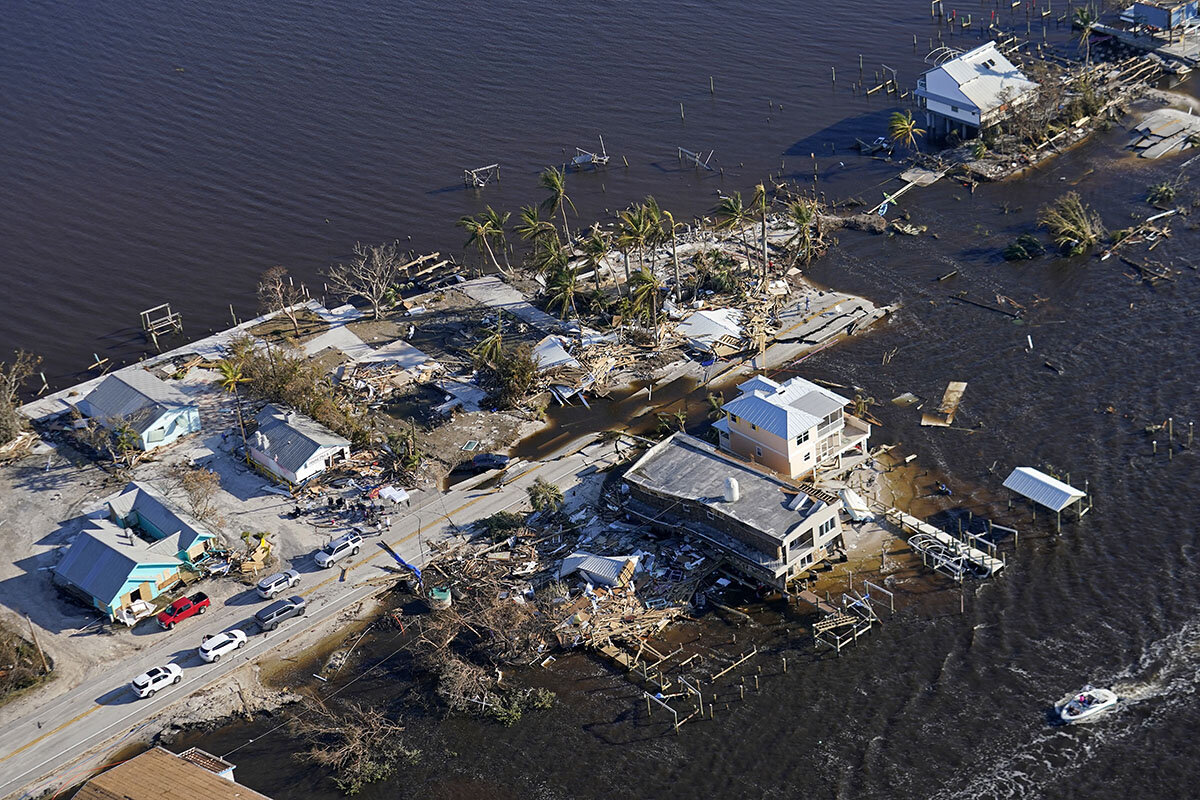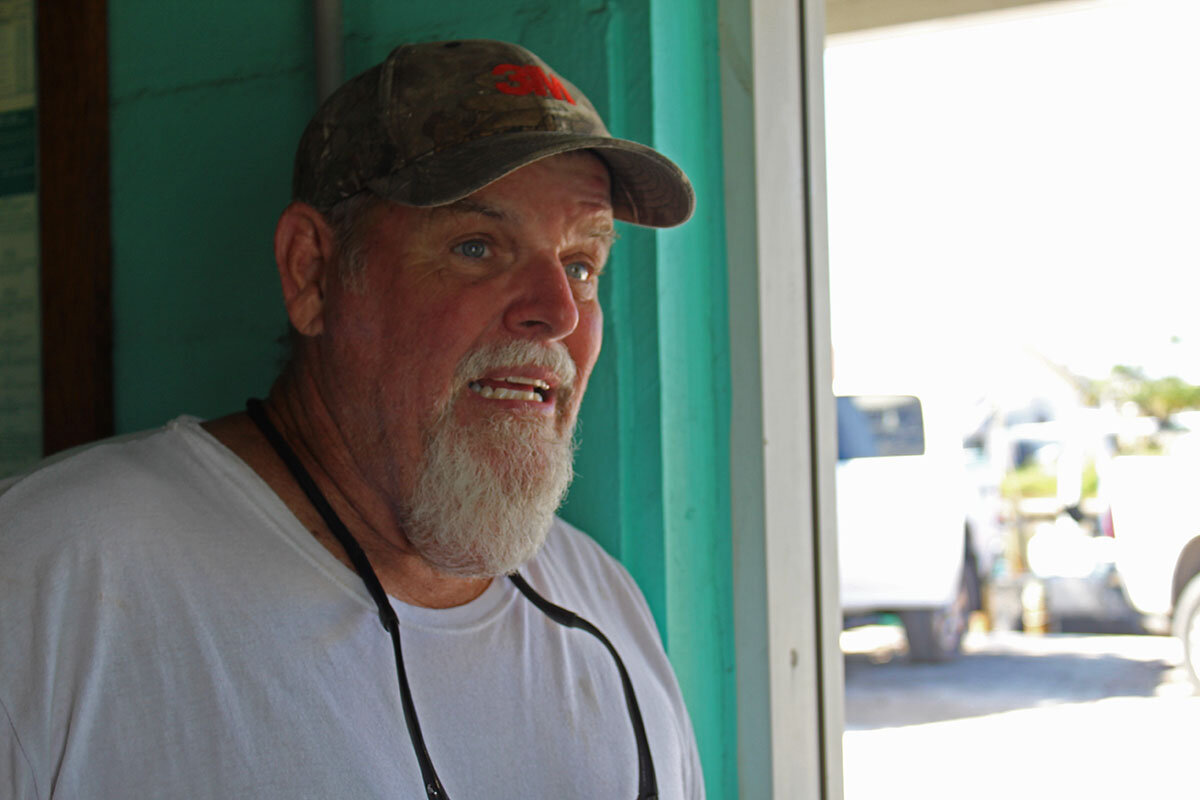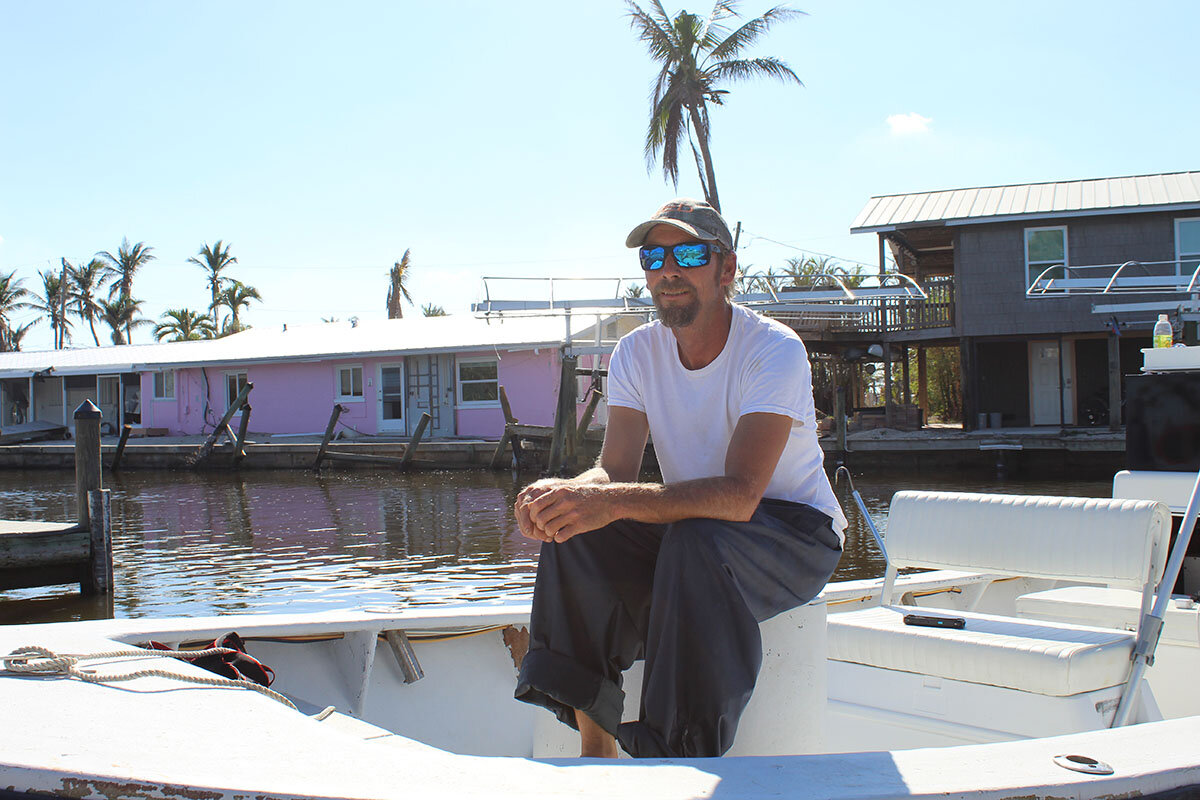How two islands could shape Florida’s post-Ian recovery
Loading...
| Pine Island, Florida
Tanned bare feet sticking out from a pair of loose-fitting blue Dickies, Joey Burnsed looks every bit the islander. The past few months, however, have shown another side of the lifestyle.
His usually packed charter fishing schedule blew away with Hurricane Ian. But like a true islander, he’s taken it in stride, coping with whatever challenges the day throws his way. Recently, that’s meant a new gig: steering his skiff to remote mangrove thickets on Pine Island, Florida, so cleanup crews can clear storm debris.
You could call that the Pine Island way – independent, resourceful, and a little stubborn. To some, the island is a modern-day link to “Old Florida,” a retreat for raconteurs, crabbers, artists, the funky and the frivolous.
Why We Wrote This
A story focused onTwo Florida islands embody two radically different approaches to Hurricane Ian recovery. They speak to how Florida is evolving and how it can best adapt to the changing climate.
But in the wake of Hurricane Ian, a decades-old question is emerging with new urgency: What will happen to the islander way of life?
Just across the sound is Sanibel Island, which has come to symbolize the “New Florida.” A $6 toll is required just to get on the island, and strict codes govern building and even what plants can be used in landscaping. When Hurricane Ian came, the damage was severe, but the island was well situated to bounce back.
As other Florida communities deal with the physical and economic toll of the hurricane, the question of whether to leave or start over is less clear. For decades, Pine Island has embodied Florida’s can-do spirit. “Florida is built on confidence,” says historian Gary Mormino, author of “Paradise Lost? The Environmental History of Florida.” “But a cumulation of challenges” is testing that way of life.
“One thing is for sure,” says Mr. Burnsed. “This hurricane has forced change. And change can be good.”
In many ways, American barrier islands and their people are independent by nature and prepared by necessity. The islands are nature’s storm absorbers. Someone who has lived here for 50 years is likely to have considered about 250 National Weather Service hurricane warnings.
But other forces are just as profound, and perhaps more complex. In a state heavily affected by climate change, smaller insurers have been going steadily bankrupt. Should the federal government help stricken Floridians rebuild – or give them a hand to leave the islands through so-called managed retreat?
“It is a moral question,” says Mr. Mormino, the historian. “There’s really no easy solution. For a lot of people, [after the most recent storms], we should basically say, ‘You’re on your own.’”
Pine Island: “The last of the old world Florida”
“On your own” is exactly how Pine Island has liked it. For 50 years, islanders have fought annexation attempts by neighboring Cape Coral. They see remaining unincorporated as essential to retaining a spirit of independence against rules and overbearing taxation.
When Florida banned gill nets in 1995, one legend goes, residents of one village blasted their fishing skiffs with shotguns, then lit the hulls on fire. The pyre could be seen from Sanibel.
Here, the Native Colusa tribe some 10,000 years ago built extensive canals as part of a fish husbandry project. Today, industrial shrimp farming follows the same template. Cattle grazes by the road. Bokeelia is the mango capital of the United States. And the island’s vast palm tree plantations supply Mar-a-Lago, former President Donald Trump’s Florida estate.
Pine Island, says island pitmaster John Petrus, is “about being country – and staying country.”
Islander Dave Bouwerman says it’s the kind of place where locals ruled an underground economy that relied on fishing, smuggling, and keeping lips zipped.
“There were some guys in town who if you got in a fight with them, you just let them win,” says Mr. Bouwerman. “Because if you beat them, they would get you in the end. They would always win. In that way, it hasn’t changed that much.”
But if Pine Island is insular, it’s also quick to help neighbors. After Ian, residents patched a breach in the Pine Island causeway using ladders and plywood. Other locals secured bulldozers and fill to rebuild the road, taking hours instead of anticipated months. Gov. Ron DeSantis credited Pine Island’s “special spirit.”
“We fight for our independence because we have to,” says Earl Wallace, a lifelong Pine Island resident and captain of a bait shrimp trawler. “The pressure to change is constant. We’re the last of the old world Florida.”
Sanibel: Elitist or visionary?
While Pine Islanders have taken each development fight as it came, Sanibel residents adopted an opposite approach. The city incorporated in the mid-1970s to thwart plans by Lee County to allow developers to build high-rise condos on the island. Then it tripled down on rules and regulations.
Culturally, the two are “like night and day,” says Mr. Burnsed. “I’m third-generation on Sanibel. But on Pine Island, I’m still an outsider.”
“You applaud [Sanibel’s anti-development] measures, but it’s elitist, I suppose,” adds historian Mr. Mormino.
Sanibel’s efforts were led by former CIA Director Porter Goss, who moved there in the 1970s. Today, he says Sanibel is a model for how the region can rebuild. Sanibel’s strictures help preserve community and natural resources, he says. Yes, the building rules are strict, but the island also provides community housing and makes concessions to longtime islanders who aren’t wealthy.
“A lot of people think Sanibel is elitist, that property values are incredible, but there are an awful lot of people who have been there a long time, a working-class community,” says Mr. Goss.
Instead of putting individual liberty above all as on Pine Island, Sanibel codifies the consensus of what Sanibel should be, including safeguarding community housing for less wealthy residents.
Such zoning and planning design guarantees “that there will always be a community in Sanibel,” says Mr. Goss. “Yes, a tourist economy is involved, but it’s not going to be a sellout to the Gulf Coast or tourists.”
At the same time, with progressive building codes, “Sanibel has showed that human beings can be part of nature and coexist with nature.”
Despite the differences in approach, Mr. Goss adds, the recovery will likely be guided more by the emotional bonds that people build with these buggy but beautiful sandbars.
“There are a lot of people who are or will be replaced, and who have lost a lot,” he says. “But on the other hand, the spirit is great and the resilience is there.”
“Everyone ... is just looking for people to [help] to nail some stuff back together.”









